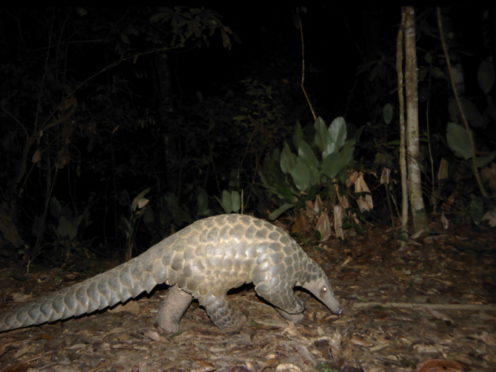Animal traffickers are taking advantage of remote ivory trade routes to smuggle one of the world’s most endangered animals out of Central Africa.
A ground-breaking new study undertaken by researchers at Stirling University has found that pangolins are being transported across remote forest borders in a largely successful attempt to avoid law enforcement.
The solitary mammals are sought after in some markets for their meat and scales and it is thought they have become high-value prey for organised criminal hunting gangs.
In the first ever study to investigate how criminals are sourcing pangolins from African forests, the Scottish researchers found that local hunters in Gabon are selling increasing numbers of the animals to Asian workers stationed on the continent for major logging, oil exploration and agro-industry projects.
The team also discovered the price for giant pangolins had risen at more than 45 times the rate of inflation between 2002 and 2014.
Dr Katharine Abernethy of the Faculty of Natural Sciences led the work, which also involved the University of Sussex and Gabonese researchers.
She said: “This is the first study of how illegally traded pangolins may be being sourced from African forests
“It shows that the high value paid internationally for large giant pangolin scales is probably affecting their price, even in very remote villages, though local subsistence hunters are probably not the primary suppliers.
“This is likely to be criminal hunting organisations, possibly those who are also trading in ivory in the region, as the demand markets are similar.”
Found in Asia and Africa, pangolins are scaled, primarily nocturnal animals, which feed predominantly on ants and termites.
The eight species of pangolin range from vulnerable to critically endangered.
The new study focused on Gabon, in Central Africa, where domestic hunting and eating of certain species of pangolin is legal.
Illegally-traded pangolins were not detected by law enforcers controlling traditional meat trade chains, but found associated with ivory trading across forest borders.







